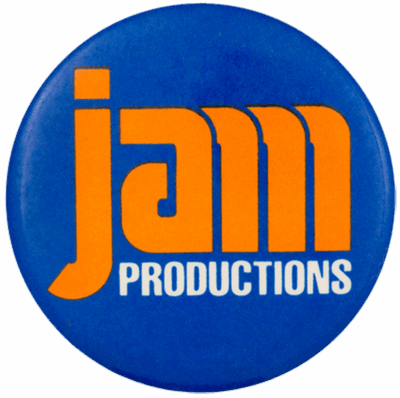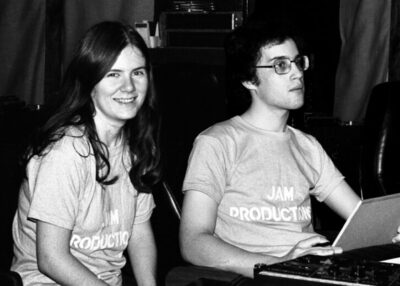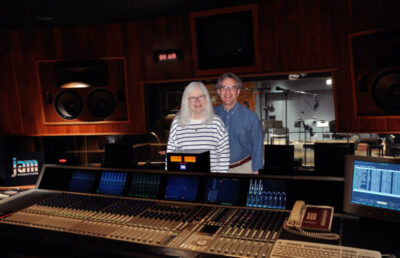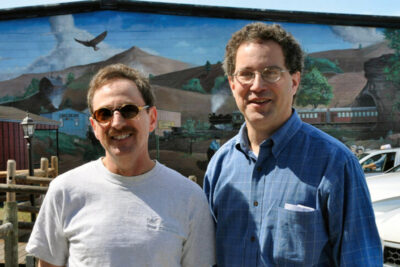Jingle Magic: How JAM Shaped Radio’s Soul In the golden age of radio, jingles weren’t just sonic branding—they were identity, memory, and magic.
Jingle Magic: How JAM Shaped Radio’s Soul
In the golden age of radio, jingles weren’t just sonic branding—they were identity, memory, and magic.
This exhibit traces the lineage of two legendary Dallas-based production houses: PAMS and JAM Creative Productions. From the revolutionary modular jingle techniques of PAMS in the 1950s and ’60s to JAM’s sleek, melodic reinventions that defined FM radio in the decades that followed, we explore how these studios shaped the soundscape of American broadcasting.
Through rare audio reels, and behind-the-scenes stories, visitors will hear the evolution of radio’s most iconic identifiers—and discover how JAM continues to echo the spirit of originality that PAMS first unleashed. And it all started over 50 years ago — USA RADIO MUSEUM
_____________________
Introduction: The Sonic Signature of a Generation
It begins with a shimmer of harmony, a burst of melody, and a name sung so perfectly it feels like it’s always been part of you. Maybe it was Z100’s “Warp Factor” cutting through the static on a summer night. Or WLS Chicago’s golden chorus echoing across the Midwest. For millions of listeners, JAM Creative Productions wasn’t just background noise—it was the sound of belonging.
Founded in Dallas in 1974, JAM became the invisible architect behind the most iconic radio station IDs in history. Their jingles weren’t just catchy—they were emotional anchors, branding tools, and cultural artifacts rolled into one. In an era when radio was the heartbeat of youth culture, JAM gave stations their soul.
This is the story of how a small studio in Texas became a global force in sonic branding. It’s a tribute to the craft, the legacy, and the enduring magic of JAM Creative Productions—a company that didn’t just produce jingles, but shaped the way we remember radio itself.
Spirit of ’76 | WJR Demo | JAM Productions, Dallas, TX
Audio Digitally Remastered by USA Radio Museum
Origins: From Bedroom Studio to Global Soundstage
In the early 1970s, Dallas was already a hotbed of jingle innovation, thanks to pioneering companies like PAMS and TM Productions. But tucked away in a modest home studio, a young audio artisan named Jon Wolfert was quietly crafting a new vision for radio branding—one built not just on melody, but on emotional connection.
Jon had cut his teeth at PAMS, absorbing the techniques that made their jingles sparkle across the AM dial. Yet he yearned for more control, more nuance, and more soul. Alongside his wife and creative partner Mary Lyn, Jon founded JAM Creative Productions in 1974, naming the company after their initials: Jon And Mary.
Their first studio was humble, but their ambition was anything but. JAM’s early packages—like The Flame and Turbo Z—caught the attention of major stations looking to refresh their sound. The breakthrough came when WABC New York, one of the most influential Top 40 stations in America, commissioned JAM to produce a new jingle series. The result was a sonic signature that felt both familiar and fresh—warm harmonies, crisp production, and a melodic hook that stuck like glue.
From there, JAM’s reputation spread like wildfire. By the late ’70s, they were producing jingles for BBC Radio 1 and 2, WLS Chicago, and dozens of other stations across North America and Europe. What set JAM apart wasn’t just their technical skill—it was their ability to make a station’s name feel like a song you’d known your whole life.
Dallas, once the cradle of jingle culture, had given birth to a new dynasty. And JAM wasn’t just riding the wave—they were reshaping it.
Craftsmanship: The JAM Method
Step inside JAM’s Dallas studios, and you won’t find a sterile digital lab. You’ll find warmth—both in the acoustics and in the philosophy. JAM’s production process is rooted in analog precision, live vocal harmony, and a reverence for the emotional power of melody. While competitors chased trends with auto-tuned shortcuts, JAM stayed true to the craft.
At the heart of their sound is a seven-voice vocal group, handpicked for blend, tone, and versatility. These singers don’t just hit notes—they sculpt them. Each jingle is recorded in layers, with harmonies stacked like sonic architecture. The result: a rich, full-bodied sound that feels like it’s wrapping around the listener.
JAM’s studios are custom-built for this kind of work. Every room is acoustically tuned, every mic placement intentional. Jon Wolfert once said, “We still make jingles the old-fashioned way… because they still work.” That ethos isn’t nostalgia—it’s strategy. JAM understands that emotional resonance comes from human voices, not digital simulations.
Their process is deeply collaborative. Stations receive custom lyric sheets, melody options, and vocal demos. JAM doesn’t just deliver a product—they co-create a sonic identity. Whether it’s a high-energy CHR station or a smooth AC format, JAM tailors every note to the brand’s personality.
Even in the streaming era, JAM’s analog warmth cuts through. Their jingles don’t just identify stations—they elevate them. They’re not background—they’re branding.
News Line | WFAA (DEMO) | JAM Productions, Dallas, TX
Audio Digitally Remastered by USA Radio Museum
Iconic Packages and Legendary Clients
 If JAM Creative Productions had a greatest hits album, it would span decades, genres, and continents. Their jingle packages aren’t just audio branding—they’re cultural touchstones. Each one carries the DNA of a station’s identity, and many became as recognizable as the songs they introduced.
If JAM Creative Productions had a greatest hits album, it would span decades, genres, and continents. Their jingle packages aren’t just audio branding—they’re cultural touchstones. Each one carries the DNA of a station’s identity, and many became as recognizable as the songs they introduced.
JAM Creative Productions didn’t just produce jingles—they created sonic identities that became inseparable from the stations they served. Each package was a masterclass in musical branding, tailored to the personality, format, and emotional tone of the station. These weren’t off-the-shelf solutions; they were bespoke compositions that elevated the listening experience and etched themselves into the memory of millions.
Among JAM’s most celebrated creations is Warp Factor, the electrifying package that helped Z100 New York dominate the CHR landscape in the 1980s. With its futuristic stingers, layered harmonies, and explosive energy, Warp Factor didn’t just announce the station—it embodied its spirit. It was the sound of youth, speed, and cultural momentum, and it became the blueprint for Top 40 branding across the country.
Then came Meltdown, a bold and aggressive suite of jingles designed for stations that wanted to make a statement. Its sharp transitions and dynamic vocal arrangements gave broadcasters a powerful tool to cut through crowded markets and command attention. Double Plus offered a more refined touch, with sleek melodies and warm textures ideal for adult contemporary formats. And Music Jam celebrated musicality itself, with lush arrangements and singable hooks that felt like part of the playlist rather than a break from it.
American Top 40 | early-1980s (DEMO) | JAM Productions, Dallas, TX
Audio Digitally Remastered by USA Radio Museum
These packages weren’t just popular—they were transformative. Stations like WLS Chicago used JAM’s jingles to define their golden era, blending Midwestern charm with national swagger. KIIS-FM Los Angeles leaned on JAM’s polished sound to capture the vibrancy of the West Coast pop scene. Across the Atlantic, BBC Radio 1 and 2 embraced JAM’s American-style branding, bringing a fresh sonic identity to British airwaves and influencing generations of UK broadcasters.
JAM’s reach extended far beyond traditional radio. Their work became the audio backbone of syndicated shows like American Top 40 with Casey Kasem, Rock, Roll & Remember with Dick Clark, and Rick Dees Weekly Top 40. These programs relied on JAM’s jingles not just for identification, but for emotional lift—framing countdowns, transitions, and storytelling moments with musical precision. Dick Bartley’s Classic Countdown also benefited from JAM’s touch, using their themes to evoke nostalgia and reinforce the timelessness of the hits he celebrated.
Even international stations like Jovem Pan in Brazil turned to JAM to define their sound, proving that the emotional language of jingles transcends borders. Whether in English, Portuguese, or any other tongue, JAM’s melodies spoke directly to the listener’s heart.
These weren’t just clients—they were collaborators. JAM’s ability to adapt, innovate, and elevate made them indispensable to the biggest names in broadcasting. And through every package, JAM reinforced a simple but profound truth: when crafted with care, a jingle isn’t just a sound—it’s a story.
Resilience and Legacy
The radio industry has weathered seismic shifts—from the rise of FM to the fall of AM dominance, from deregulation to digital disruption. Through it all, JAM Creative Productions remained not only relevant, but revered. Their resilience is rooted in a simple but powerful philosophy: craft over compromise.
In the mid-1990s, the Telecommunications Act of 1996 triggered a wave of consolidation. Stations were bought, formats flipped, and branding became homogenized. Many jingle companies folded or merged, chasing volume over voice. JAM stood firm. They refused to dilute their sound or mass-produce generic IDs. Instead, they doubled down on custom work, preserving the artistry that made them legendary.
Even as automation and voice tracking replaced live DJs, JAM’s jingles continued to provide warmth and personality. Their packages gave stations a human touch—something increasingly rare in the age of algorithms.
And then came streaming. Pandora, Spotify, and Apple Music changed how people consumed audio. But JAM adapted. They began crafting IDs for internet radio, streaming stations, and podcasts, proving that the need for sonic identity transcends platform.
Today, JAM’s catalog is a living archive of radio history. Their jingles are studied by audio branding experts, collected by enthusiasts, and celebrated by broadcasters who understand that a great jingle isn’t just a sound—it’s a legacy.
Jon and Mary Lyn Wolfert still helm the company, ensuring that every note carries the same care and intention as it did in 1974. JAM isn’t just surviving—they’re thriving, because they never stopped believing in the emotional power of melody.
News Sounders | 1984 (DEMO) | JAM Productions, Dallas, TX
Audio Digitally Remastered by USA Radio Museum
Emotional Resonance: Why JAM Still Matters
JAM’s jingles aren’t just audio branding—they’re emotional time machines. For millions of listeners, a JAM jingle instantly evokes a memory: the thrill of hearing your favorite song queued up, the comfort of a familiar DJ’s voice, the feeling of being part of a community tuned into the same frequency.
These sonic signatures are deeply personal. A five-second jingle can transport someone back to their teenage bedroom, their first car, or a summer spent glued to the radio. JAM understood this power and wielded it with care. Their melodies weren’t just catchy—they were crafted to stir something inside.
Stations like WLS, Z100, and KIIS didn’t just sound good—they felt good. And JAM was the emotional glue. Their work gave stations identity, warmth, and soul. Even today, when a classic JAM cut plays on a retro stream or in a museum exhibit, it doesn’t just sound vintage—it feels alive.
That’s why JAM belongs in the cultural canon. Their jingles are more than marketing—they’re memory. And in a world of fleeting content, JAM’s work endures because it was built to connect.
BBC Radio 1 | 1984 (DEMO) JAM Productions, Dallas, TX
Audio Digitally Remastered by USA Radio Museum
JAM’s Place in History: A Tribute to the Architects of Radio Emotion
To speak of JAM Creative Productions is to speak of radio’s soul. For over five decades, Jon and Mary Lyn Wolfert have not merely produced jingles—they’ve composed the emotional architecture of American broadcasting. Their work is etched into the memory of millions, not as background noise, but as the soundtrack to lives lived in stereo.
But JAM’s story doesn’t begin in isolation—it’s a continuation of a legacy first shaped by PAMS Productions, the Dallas-based jingle powerhouse founded by William B. Meeks Jr. in 1951. PAMS revolutionized radio branding in the 1960s and early ’70s, crafting iconic packages for stations like WABC, WLS, and BBC Radio 1. When PAMS suspended operations in 1978, its future was uncertain—until Jon Wolfert, a former PAMS employee, stepped in.
In 1990, Jon acquired the original PAMS corporation and its copyrights, ensuring that the artistry and innovation of PAMS would live on. JAM became the official steward of the PAMS catalog, producing new versions of classic packages using the original backing tracks. This wasn’t just a business move—it was an act of reverence.
And then came Ken R. Deutsch, a jingle historian and producer who salvaged thousands of original PAMS reels after the company’s liquidation. With Jon’s blessing, Ken R. was granted a license to distribute these treasures on CD in the late 1990s and early 2000s. His work made the magic of PAMS accessible to fans, collectors, and broadcasters worldwide, preserving a golden era of radio for future generations.
Together, Jon and Ken R. ensured that PAMS wouldn’t fade into obscurity—it would be celebrated, studied, and heard. Their partnership was a masterclass in preservation, passion, and respect for the craft.
Today, JAM stands as both innovator and archivist. Their jingles continue to define stations, evoke memory, and stir emotion. And through their stewardship of PAMS, they’ve safeguarded one of radio’s most cherished legacies.
To Jon and Mary Lyn: this tribute is for you. For the sleepless nights spent perfecting a mix. For the laughter and love you poured into every session. For believing that melody matters, and that radio deserves beauty. You didn’t just make jingles. You made them magical.
_____________________
A USARM Note of Acknowledgement: All photographs featured in this presentation-as credited–is the sole property of Ken R. Deutsch and Radio World. All audio featured in this presentation is the sole property of Jonathan Wolfert and JAM Productions, Inc., Dallas, TX.
_____________________
A USARM Viewing Tip: On your PC? Mouse/click over each image for expanded views. On your mobile or tablet device? Finger-tap all the above images inside the post and stretch image across your device’s screen for LARGEST digitized view. Then click your brower’s back arrow to return to the featured post.





I Hope JAM can do jingles for kids networks like YTV: Youthful Television in Toronto, Ontario, CBBC in London, England, and other children’s channels soon Jim